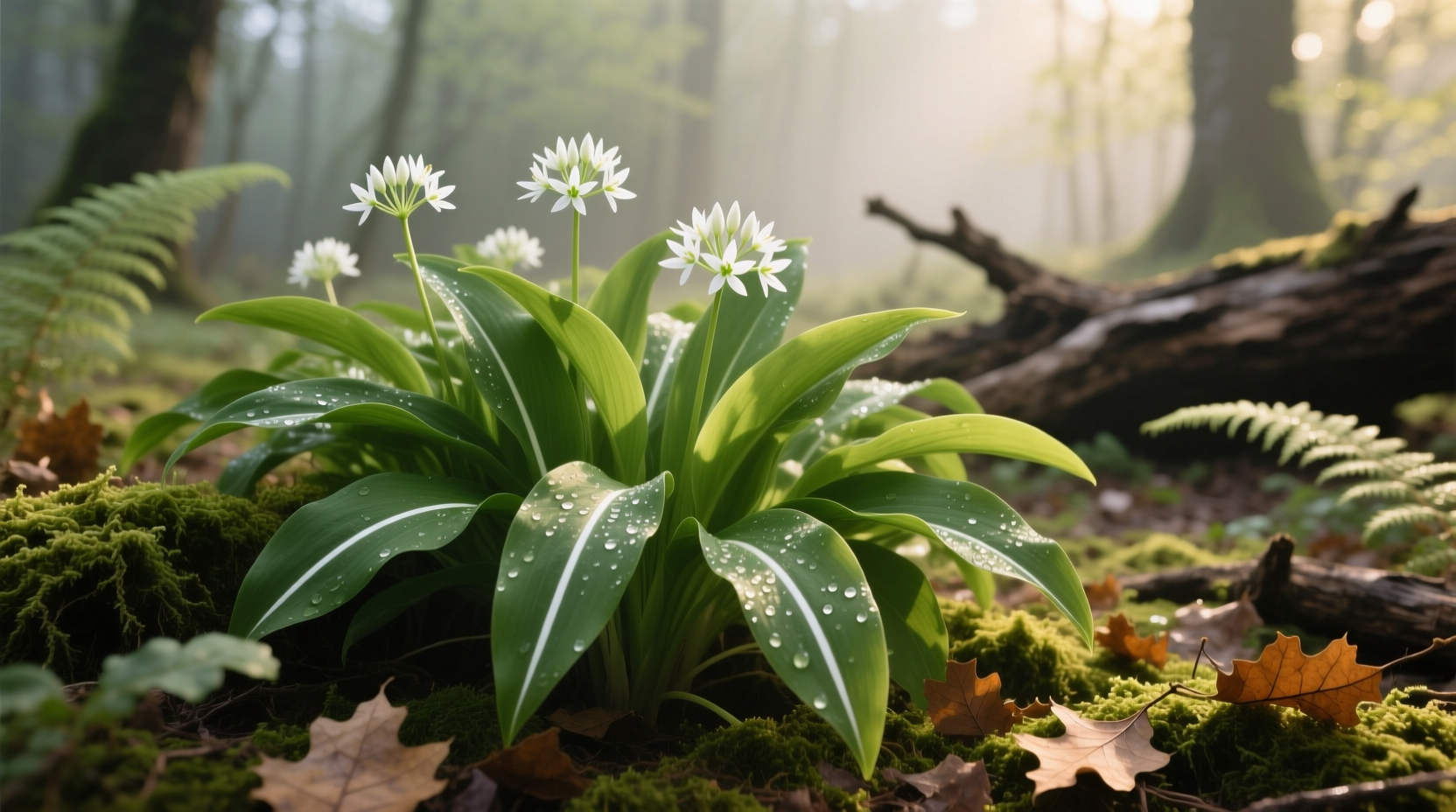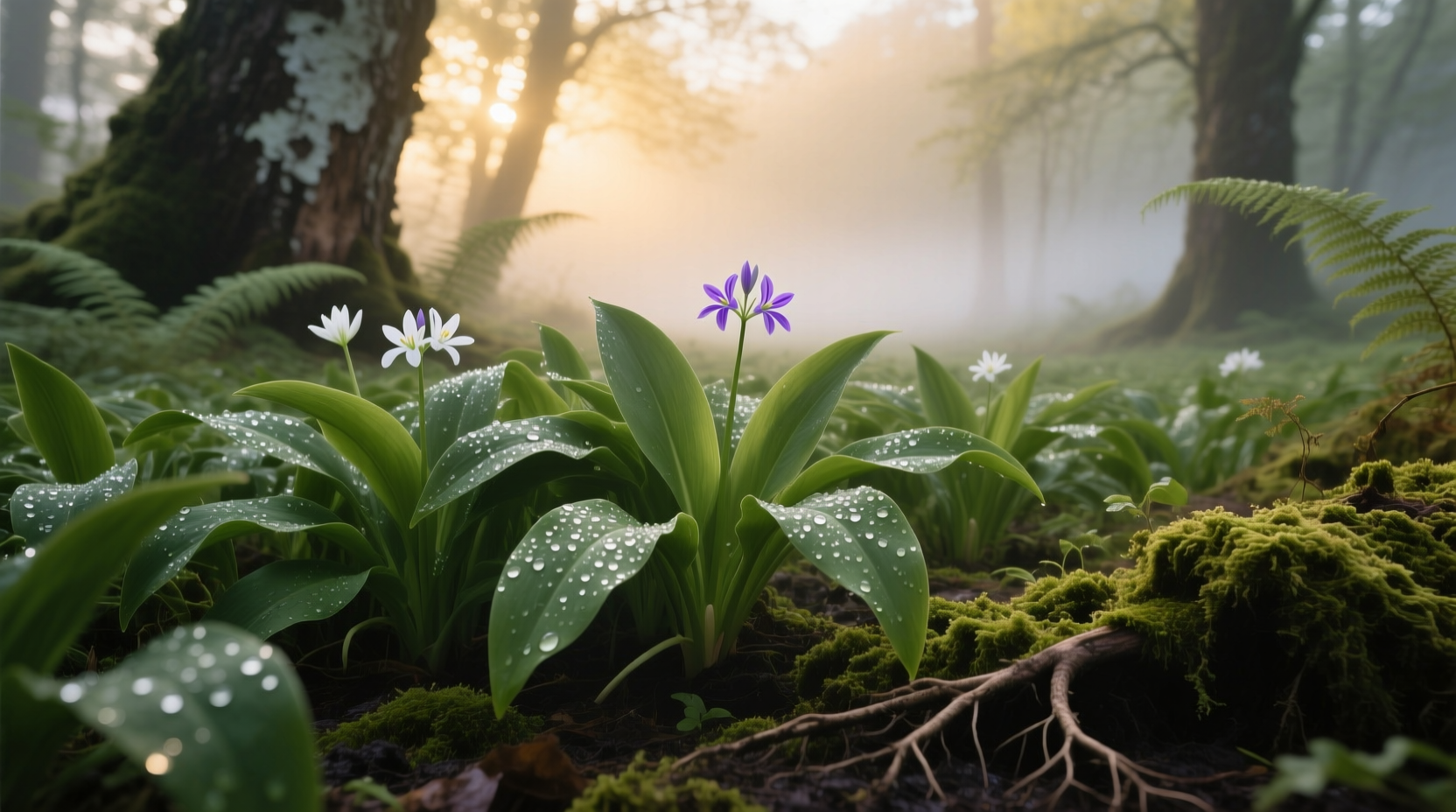Wild garlic (Allium ursinum) thrives in damp, deciduous woodlands across Europe and Asia, identifiable by its distinctive garlic scent, broad lance-shaped leaves, and white star-shaped flowers. Harvest leaves from February to May, avoiding toxic look-alikes like lily of the valley by confirming the strong garlic aroma when crushed. Sustainable harvesting practices ensure continued growth without damaging natural populations.
Discover how to safely identify, harvest, and utilize wild garlic with confidence. This comprehensive guide provides essential knowledge for foragers and gardeners alike, helping you distinguish true wild garlic from dangerous look-alikes while maximizing your seasonal harvest.
Why Wild Garlic Matters for Modern Foragers
Wild garlic transforms spring foraging with its versatile culinary applications and distinctive flavor profile. Unlike cultivated varieties, wild garlic offers a more complex taste that enhances pestos, soups, and salads. Understanding proper identification prevents potentially dangerous mistakes—mistaking poisonous plants for wild garlic causes numerous hospitalizations annually according to Royal Horticultural Society reports.
Instant Identification Checklist
Before harvesting, verify these critical characteristics:
- Smell test: Crush a leaf—authentic wild garlic emits a strong garlic aroma within seconds
- Leaf structure: Single, broad, lance-shaped leaves growing directly from the base (not hollow like chives)
- Flower pattern: Umbrella-shaped clusters of white star flowers appearing in April-May
- Habitat: Found in moist, shaded deciduous woodlands, often near streams
| Plant | Key Identification Features | Danger Level | Differentiation Tip |
|---|---|---|---|
| Wild Garlic (Allium ursinum) | Broad leaves, white star flowers, onion-like bulb | Edible | Strong garlic smell when crushed |
| Lily of the Valley | Bell-shaped white flowers, two leaves per stem | Highly toxic | No garlic scent, red berries in summer |
| Autumn Crocus | Narrower leaves, purple flowers (autumn) | Deadly | No scent, appears later in year |
| Ramsons | Identical to wild garlic | Edible | Synonym for wild garlic in many regions |
Seasonal Harvesting Timeline
Timing your wild garlic harvest correctly ensures optimal flavor and plant sustainability. The USDA Plants Database documents these critical growth stages:
- February-March: First leaves emerge—tender and mild, perfect for salads
- April: Peak leaf production with developing flower buds—ideal for pesto
- May: Flowers bloom—harvest both leaves and blossoms for garnishes
- June: Seed pods form—bulbs become less flavorful
Never harvest more than one-third of a patch to maintain healthy populations. The Woodland Trust recommends leaving at least 70% of plants undisturbed for ecosystem balance.

Growing Conditions for Successful Cultivation
While wild garlic thrives naturally in specific environments, you can cultivate it in your garden with these conditions:
- Soil: Moist, well-drained, humus-rich soil with pH 5.5-7.0
- Light: Partial to full shade (mimics woodland floor conditions)
- Companion plants: Ferns, bluebells, and hostas create ideal microclimates
- Propagation: Plant bulbs 10-15cm deep in autumn or divide established clumps
Wild garlic spreads aggressively through both bulbs and seeds, forming dense colonies within 2-3 years. The Royal Horticultural Society notes it makes an excellent ground cover for challenging shady areas where other plants struggle.
Practical Harvesting Techniques
Follow these professional foraging methods to maximize your yield while protecting natural habitats:
- Cut leaves at the base with scissors—never pull entire plants
- Harvest only what you'll use within 48 hours for peak freshness
- Collect morning dew-free leaves for best flavor concentration
- Wear gloves to prevent scent transfer to other foraged items
- Use breathable containers to prevent moisture buildup
For culinary applications, immediately rinse harvested leaves in cold water and pat dry. Wild garlic loses potency quickly, so process within hours of harvesting for optimal results.
Culinary Applications and Preservation
Transform your wild garlic harvest into delicious creations with these proven methods:
- Wild garlic pesto: Blend 2 cups leaves, 1/2 cup nuts, 1/2 cup olive oil, 1/4 cup Parmesan, and salt
- Infused oils: Steep leaves in olive oil for 3-5 days (refrigerate to prevent botulism)
- Freezing: Blanch leaves for 30 seconds, then freeze in ice cube trays with water
- Drying: Hang small bunches upside down in dark, dry area for herbal teas
According to University of Copenhagen research, wild garlic contains higher allicin concentrations than cultivated varieties, providing enhanced health benefits including cardiovascular support and antimicrobial properties.
Regional Growth Variations
Wild garlic adapts to local conditions across its range:
- UK and Ireland: Appears earlier (January) in southern regions, peaks in April
- Central Europe: Later emergence (March), longer season through June
- Scandinavia: Shorter season concentrated in May due to colder climate
- Asia Minor: Different subspecies with slightly narrower leaves and milder flavor
Local foraging groups often maintain regional calendars tracking first appearances each year. The European Environment Agency notes climate change has shifted traditional harvesting windows by 2-3 weeks earlier over the past two decades.
Legal and Ethical Foraging Guidelines
Responsible harvesting requires understanding local regulations:
- National parks often prohibit wild plant harvesting without permits
- Private land requires owner permission before foraging
- Some regions protect wild garlic under conservation laws
- Never harvest in areas potentially contaminated by pollutants
The Countryside and Rights of Way Act 2000 in the UK allows personal use harvesting of wild plants except those specifically protected. Always check local regulations before foraging, as penalties for illegal harvesting can reach £5,000 in protected areas.











 浙公网安备
33010002000092号
浙公网安备
33010002000092号 浙B2-20120091-4
浙B2-20120091-4